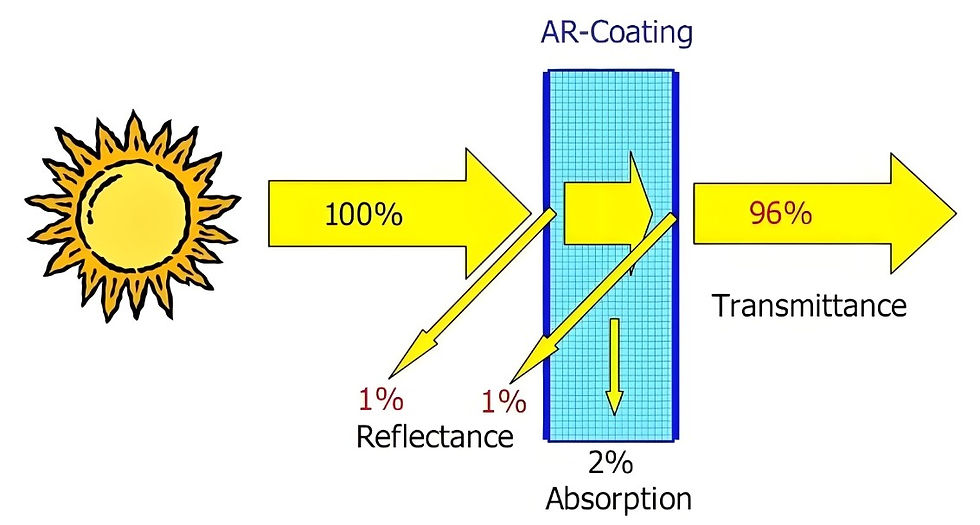What is Anti-Reflective ?
Anti-reflective means less light is reflected. With less reflection, more light can pass through. In the picture below, the lens with the anti-reflective coating (on the right) reflects only 2% of the light, so 98% of the light passes through.

What is Anti-Reflective Coating?
Anti-reflective coating is a special layer on lenses that helps reduce reflections. It is very thin and strong, just like the scratch-resistant coating, and it allows more light to pass through the lens.
Anti-reflective coating is similar to the coating on microscope and camera lenses. It is made of several layers of metal oxides. These metal oxide layers are applied to both the front and back of the lens. The light reflected from one layer is canceled out by the light reflected from another layer. This process is called optical interference, and it is how the anti-reflective coating works.
What is the use of Anti-Reflective Coating?
A common problem with sunglasses is glare, which happens when light hits the back of the lens and reflects into your eyes. The anti-reflective coating helps reduce this type of reflection.
The material used for the anti-reflective coating has a refractive index between air and glass. This makes the strength of light reflected from both the inside and outside surfaces of the lens nearly equal. When the coating’s thickness is about one-quarter of the light's wavelength, the reflected light from both surfaces cancels each other out, reducing the glare you see.

Applications of Anti-Reflective Coating
Anti-reflective coating is used on high-index plastic lenses, as well as glass or CR-39 plastic lenses. Because the coating can make the front surface look smudged, it is usually applied only to the back surface of the lens.
Lenses with anti-reflective coating often have a faint green or purple reflection on the front surface.
When cleaning lenses with anti-reflective coating, special cleaning solutions and cloths should be used. People often think anti-reflective lenses get dirty more quickly than regular lenses. This is because the surface doesn’t reflect as much, making dust easier to see, but it’s not really dirt.

Conclusion
In conclusion, anti-reflective coating reduces glare and enhances light transmission through lenses, improving visual clarity. Proper care is important to keep the lenses in good condition.
PS: Visit our website www.visionopolis.in to learn more about our expertise and services



Comments